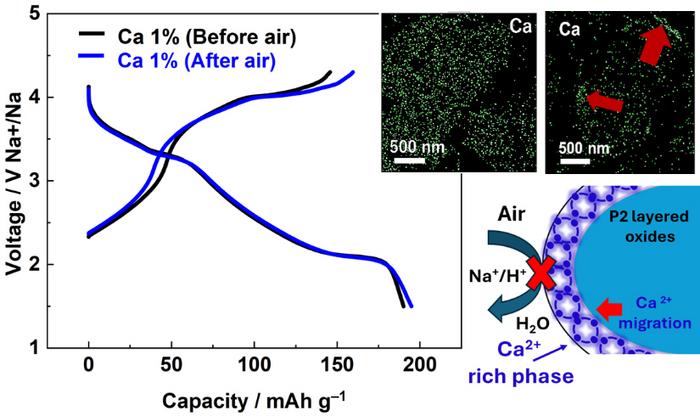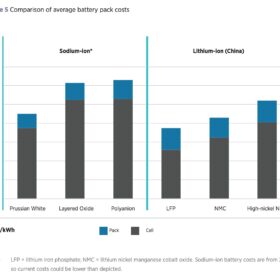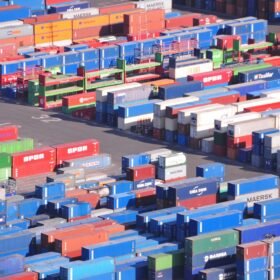From ESS News
Researchers at the Tokyo University of Science in Japan report a breakthrough in improving the stability of sodium-ion batteries under ambient conditions through a new calcium-doping strategy.
Sodium-ion batteries have long struggled with surface instability in air and water, particularly in their cathode materials. These instabilities cause structural degradation, irreversible phase changes during cycling, and limited energy density, ultimately leading to reduced performance and shorter lifespans.
The scientists focused on enhancing the air and water stability of a sodium compound known as Na₂/₃[Fe₁/₂Mn₁/₂]O₂ (NFM), which they describe as a “very promising composition” for use as a P2-type cathode material offering fast ion transport and strong cycling stability.
In their approach, the researchers replaced a small fraction of sodium (Na) ions in NFM with calcium (Ca) ions, keeping the Ca concentration below 2% of the electrode’s weight.
Testing revealed that Ca-doped NFM achieved a higher rate performance than conventional NFM while maintaining a high discharge capacity. “Most importantly, Ca-doped NFM exhibited high stability in air and water,” the researchers noted. “Whereas two days of air exposure caused regular NFM to lose 35% of its discharge capacity, Ca-doped NFM showed no losses.”
To determine the source of this improved stability, the team used X-ray diffraction and transmission electron microscopy. They found that spontaneous calcium migration during air exposure created a Ca-enriched surface layer, which prevented the replacement of Na ions with hydrogen (H) ions and Na deintercalation.
“This newly explored mechanism appears to be quite effective for mitigating surface degradation reactions in layered oxides,” the researchers said. They added that calcium doping also enhanced crystallinity and increased interlayer spacing in NFM. “Moreover, the protective layer shields NFM during storage before battery assembly.”
Looking ahead, the team plans to apply the doping strategy combined with other materials and synthesis techniques.
“The spontaneous formation of the protective interface observed in this work can evolve progressively as needed,” they emphasized. “Additionally, a co-doping strategy combining calcium with other elements such as copper (Cu) and titanium (Ti) could further enhance air stability and performance while maintaining calcium migration and protection.”
Their work was presented in the study “Enhanced air stability by calcium doping in Na2/3[Fe1/2Mn1/2]O2 cathode material for Na-ion batteries,” published in the Journal of Materials Chemistry A.
In July, another research team from the Tokyo University of Science showed that using copper can eliminate defects in sodium manganese oxide battery types, boosting battery cycle life.
This content is protected by copyright and may not be reused. If you want to cooperate with us and would like to reuse some of our content, please contact: editors@pv-magazine.com.









By submitting this form you agree to pv magazine using your data for the purposes of publishing your comment.
Your personal data will only be disclosed or otherwise transmitted to third parties for the purposes of spam filtering or if this is necessary for technical maintenance of the website. Any other transfer to third parties will not take place unless this is justified on the basis of applicable data protection regulations or if pv magazine is legally obliged to do so.
You may revoke this consent at any time with effect for the future, in which case your personal data will be deleted immediately. Otherwise, your data will be deleted if pv magazine has processed your request or the purpose of data storage is fulfilled.
Further information on data privacy can be found in our Data Protection Policy.